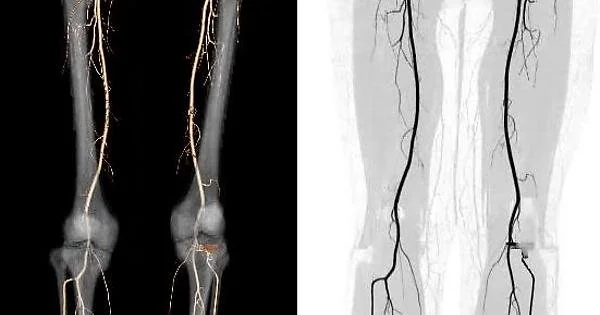Lower Extremity Arteriogram
What is a Lower Extremity Arteriogram?
A Lower Extremity Arteriogram, also called Peripheral Angiography, is a diagnostic imaging procedure used to visualize arteries in the legs. It helps identify blockages, narrowing (stenosis), or other abnormalities in blood vessels that may be causing leg pain, non-healing wounds, or poor circulation.
This test is essential for diagnosing Peripheral Artery Disease (PAD) and guiding treatment decisions.

How the Procedure Works
The procedure uses X-ray imaging and a special contrast dye that is injected into the arteries. The dye highlights blood flow patterns, allowing Dr. Suri to see areas of restricted or blocked circulation in real-time.
Why It’s Done
A Lower Extremity Arteriogram is recommended for patients with symptoms such as:
- Leg pain while walking (claudication)
- Numbness or coldness in the legs/feet
- Non-healing foot ulcers or wounds
- Weak or absent pulses in the legs
- Suspected Peripheral Artery Disease (PAD)
- Prior history of vascular disease or risk factors (e.g., smoking, diabetes, high cholesterol)
Preparation for the Test
- Fasting may be required for several hours before the procedure.
- You may need to stop certain medications (blood thinners, etc.) temporarily.
- Inform the doctor of any allergies to iodine or contrast dye.
- Blood work may be performed to assess kidney function before using contrast material.
What to Expect During the Procedure
- Performed in a vascular lab or hospital setting
- A local anesthetic is used to numb the area (usually the groin or wrist)
- A catheter is inserted into the artery, and contrast dye is injected
- X-ray images are captured in real time
- The procedure typically takes 30–60 minutes
Post-Procedure Care
- You’ll be monitored for a few hours after the procedure
- Avoid heavy lifting or strenuous activity for 24–48 hours
- Drink plenty of fluids to flush the contrast dye from your system
- Follow-up instructions will be provided before discharge
Risks and Possible Side Effects (Rare)
- Bruising or bleeding at the catheter insertion site
- Allergic reaction to contrast dye
- Infection (rare)
- Temporary kidney irritation from contrast (especially in patients with kidney issues)
Dr. Suri and his team take all necessary precautions to minimize risk and ensure safety throughout the procedure.
